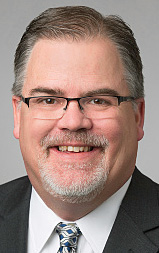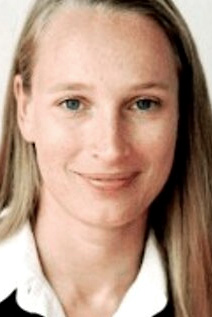/ Featured Blogs
Article 28 of the NIS2 Directive and the DNS Industry
 At a workshop on the implications of Article 28 for the DNS industry organized by eco -- Association of the Internet Industry in October 2023, stakeholders from the DNS industry, the European Commission, national governments, and the ICANN community convened to discuss the challenges facing the DNS industry and to work together on avoiding fragmentation as much as possible.
At a workshop on the implications of Article 28 for the DNS industry organized by eco -- Association of the Internet Industry in October 2023, stakeholders from the DNS industry, the European Commission, national governments, and the ICANN community convened to discuss the challenges facing the DNS industry and to work together on avoiding fragmentation as much as possible.
- By Thomas Rickert
- Comments: 0
- Views: 9,064
UN and Cybersecurity: Searching for Consensus in a Divided World
 The 78th UN General Assembly (UNGA) addressed the issue of cybersecurity again at one of its last meetings in December 2023. It included the adoption of four resolutions on the Open-Ended Working Group (OEWG), a "Program of Action" (POA), and autonomous weapon systems. The texts of the four draft resolutions were negotiated in UNGA's 1st committee, responsible for international security issues, in October and November 2023.
The 78th UN General Assembly (UNGA) addressed the issue of cybersecurity again at one of its last meetings in December 2023. It included the adoption of four resolutions on the Open-Ended Working Group (OEWG), a "Program of Action" (POA), and autonomous weapon systems. The texts of the four draft resolutions were negotiated in UNGA's 1st committee, responsible for international security issues, in October and November 2023.
- By Wolfgang Kleinwächter
- Comments: 0
- Views: 14,001
Who Is Really Behind the Plan to Block .Web?
 In May of this year, I questioned whether the continued legal maneuvering of a company called Altanovo Domains Ltd. (Altanovo) could further delay the launch of .web. After reading its second Independent Review Process (IRP) complaint, and ICANN's response, it seems that the unfortunate answer is a resounding "yes," or at least that is Altanovo's intent.
In May of this year, I questioned whether the continued legal maneuvering of a company called Altanovo Domains Ltd. (Altanovo) could further delay the launch of .web. After reading its second Independent Review Process (IRP) complaint, and ICANN's response, it seems that the unfortunate answer is a resounding "yes," or at least that is Altanovo's intent.
- By Kirk Salzmann
- Comments: 3
- Views: 11,614
The Trajectory of the Broadband Industry
 For well over a decade, it was fairly easy to understand the trajectory of the broadband industry. In the residential market, cable companies snagged all the growth while telcos shrank as customers abandoned DSL. Other technologies like fiber or fixed wireless gained customers but were a blip on the national scale.
For well over a decade, it was fairly easy to understand the trajectory of the broadband industry. In the residential market, cable companies snagged all the growth while telcos shrank as customers abandoned DSL. Other technologies like fiber or fixed wireless gained customers but were a blip on the national scale.
- By Doug Dawson
- Comments: 0
- Views: 7,220
It’s the Latency, FCC
 Section 706 of the Telecommunications Act of 1996 orders the FCC to "encourage the deployment on a reasonable and timely basis of advanced telecommunications capability to all Americans." On October 25, The FCC issued a notice of inquiry (NOI) into how well we are doing and invited comments. The NOI points out that COVID and the concomitant increase in the use of interactive applications has "made it clear that broadband is no longer a luxury...
Section 706 of the Telecommunications Act of 1996 orders the FCC to "encourage the deployment on a reasonable and timely basis of advanced telecommunications capability to all Americans." On October 25, The FCC issued a notice of inquiry (NOI) into how well we are doing and invited comments. The NOI points out that COVID and the concomitant increase in the use of interactive applications has "made it clear that broadband is no longer a luxury...
- By Larry Press
- Comments: 1
- Views: 11,155
ICANN’s Inaction on NIS2 Tests the Effectiveness of the Multistakeholder Model
 ICANN's response to the European Union's Network and Information Security Directive (NIS2) is a litmus test on whether its policy processes can address the needs of all stakeholders, instead of only satisfying the needs of the domain industry. Early indications from the ICANN Hamburg meeting point to another disappointment for law enforcement, cybersecurity professionals, and the many businesses seeking to reinstate WHOIS as required by NIS2.
ICANN's response to the European Union's Network and Information Security Directive (NIS2) is a litmus test on whether its policy processes can address the needs of all stakeholders, instead of only satisfying the needs of the domain industry. Early indications from the ICANN Hamburg meeting point to another disappointment for law enforcement, cybersecurity professionals, and the many businesses seeking to reinstate WHOIS as required by NIS2.
- By Mason Cole
- Comments: 5
- Views: 9,888
Can We Get More Eyes on Britain’s Largest Scam “Watch List”?
 The FCA has been naming and shaming financial scam domains for decades. Its "warning list" is probably one the most extensive databases of its kind. But does it do a good enough job of actually warning people? Let us begin with the FCA website, which would not exactly get full points for user-friendliness: locating the "watch list" is a task in and of itself, to say nothing of consulting and scrutinising it.
The FCA has been naming and shaming financial scam domains for decades. Its "warning list" is probably one the most extensive databases of its kind. But does it do a good enough job of actually warning people? Let us begin with the FCA website, which would not exactly get full points for user-friendliness: locating the "watch list" is a task in and of itself, to say nothing of consulting and scrutinising it.
- By Dimitris Dimitriadis
- Comments: 1
- Views: 16,965
Is Broadband Essential?
 For many years, I've heard people say that broadband is essential. I read it in articles. I hear it on broadband panels and webcasts. I see it said in comments on social media. It's obvious that a whole lot of people think broadband is essential. But what exactly does that mean? Does it mean that broadband is important in a lot of people's lives, or does it mean that broadband is something that society can't live without?
For many years, I've heard people say that broadband is essential. I read it in articles. I hear it on broadband panels and webcasts. I see it said in comments on social media. It's obvious that a whole lot of people think broadband is essential. But what exactly does that mean? Does it mean that broadband is important in a lot of people's lives, or does it mean that broadband is something that society can't live without?
- By Doug Dawson
- Comments: 0
- Views: 6,802
DOTZON Study: Digital Company Brands 2023
 DOTZON presents the sixth edition of the Digital Company Brands study. After having introduced the study in 2018, DOTZON continued to expand and enhance the underlying data to display how companies successfully use their Digital Company Brands. The Digital Company Brand is the digital dimension of a company brand and mirrors the "digitalness "of a company.
DOTZON presents the sixth edition of the Digital Company Brands study. After having introduced the study in 2018, DOTZON continued to expand and enhance the underlying data to display how companies successfully use their Digital Company Brands. The Digital Company Brand is the digital dimension of a company brand and mirrors the "digitalness "of a company.
- By Katrin Ohlmer
- Comments: 0
- Views: 8,234
Call the Routing Police!
 There was a somewhat unfortunate outage for a major communications service provider in Australia, Optus, in mid-November. It appears that one of their peer Border Gateway Protocol (BGP) networks mistakenly advertised a very large route collection to the Optus BGP network, which caused the routers to malfunction in some manner.
There was a somewhat unfortunate outage for a major communications service provider in Australia, Optus, in mid-November. It appears that one of their peer Border Gateway Protocol (BGP) networks mistakenly advertised a very large route collection to the Optus BGP network, which caused the routers to malfunction in some manner.
- By Geoff Huston
- Comments: 0
- Views: 9,406